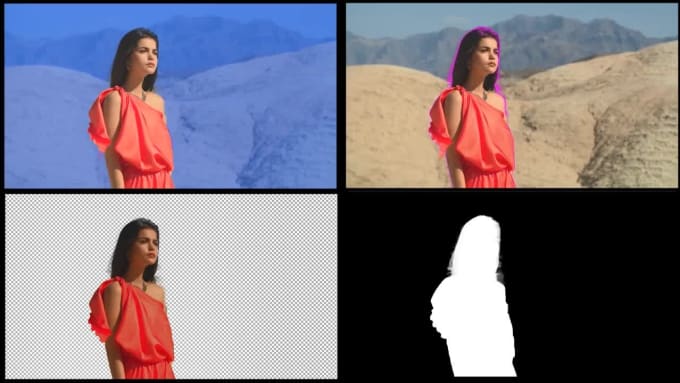With the help of VFX or visual effects, one can project their imaginations onto a screen. Visual effects are commonly used in movies, television shows, and most games. It enhances the viewing experience and almost everyone loves it, as it takes the audience to an entirely virtual world.
Animators have always been in the quest for near-real animations. Tracing live footage gives cues to create real life simulations, and is known as rotoscoping. It was initially done with the aid of a device called a rotoscope, which is now replaced by computers.
Rotoscoping VFX enables the creation of refined visual effects and enhances the viewing experience further.
There is a fine line between VFX and special effects. VFX makes use of computers, and the effects are added after the scene is shot. A spacecraft landing on the earth is an example of a VFX.
Effects created at the location are known as special effects, and a controlled explosion on the set to depict a tragic scene is one such example. The post-production team makes use of computer-generated imagery to create the virtual world.
How Does It Work?
Rotoscoping in VFX creates a matte for the object that is to be removed from a particular background. This object is then placed and merged with another background.
The object color and the settings can be changed on need basis. You can use it to create scenes that are otherwise difficult or unsafe to shoot. It also helps in saving on expensive movie setups.
Different Types of Tool and Techniques
Rotoscoping requires the use of various tools like positioning, rotating, scaling, and roto-splining. A filmmaker resorts to various rotoscoping techniques to meet the desired objectives. Some of these include articulated rotoscoping, garbage matte creation, matte generation, and 2D motion tracking.
Some of the commonly used VFX software includes Adobe After Effects, 3Ds Max, Boujou, Autodesk Maya, and Mocha.
The use of Silhouette FX in VFX makes rotoscoping easier. The software can either be used independently or for supporting applications like Final Cut Pro or After Effects. On the other hand, AE CS3 aids in creating moving visuals and effects at the needed speed.
Combustion consists of a set of helpful rotoscoping tools. It can correct colors, stabilize images, text effects, short-form editing, etc. Also, Fusion can be used to achieve collaboration between 2d and 3d tools.
Rotoscoping VFX serves the viewer with a visual treat by enlarging the visual effects more.
Tips for a Better Rotoscoping
You may follow the below tips for achieving the desired output.
- If you face a complicated object, do not try to use one single shape. It is advisable to break it don’t into distinct shapes. Those parts which move independently can be identified as different shapes. For instance, you may distinguish fingers into separate sub-shapes.
- Limiting the use of points is a useful tip for ensuring a proper outline. Moreover, it gets challenging to keep track of numerous points. Also, refrain from changing matte outlines over multiple frames. This produces a more stable appearance. Rotoscoping tools are well equipped to create intricate lines with minimum use of points.
- Limit the number of keyframes to the extent possible. A new keyframe isn’t required with every frame. The computer automatically does the integration of the keyframes.
- You may put to use the knowledge of animation, as rotoscoping is similar. Consider incorporating arcs and ease in and ease out techniques. Arcs represent the visual path of the object. Ease in and ease out depicts the time needed for acceleration or slowdown in movement. Taking these into consideration while rotoscoping VFX supports a quick identification of the likely movements of the object. It also gives a fair idea of when should ease in and ease out take place. This assists in a suitable placing of the keyframes.
You may use a green screen to extract the desired element or object in addition to the above. Also, decreasing motion blur supports a clean removal of the object. Going through the film before rotoscoping gives direction and a clearer understanding of the objectives.
The Demand for Video Graphics
Visual effects are widespread in the film industry. They are also known in the gaming segment. Moreover, video graphics are gaining popularity for interactive media projects. They have made their presence known in the education sector too.
Learning and informative videos are gaining popularity amongst kids. It is an exciting way to learn new things, and hence video graphics are in demand in the edutech sector.
Rotoscoping may be a little tedious, but valuable for delivering a quality output. Thus, a VFX artist should have rotoscoping skills.

